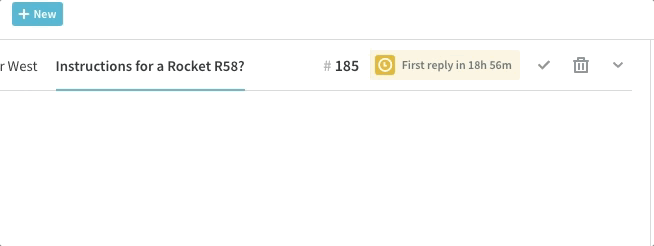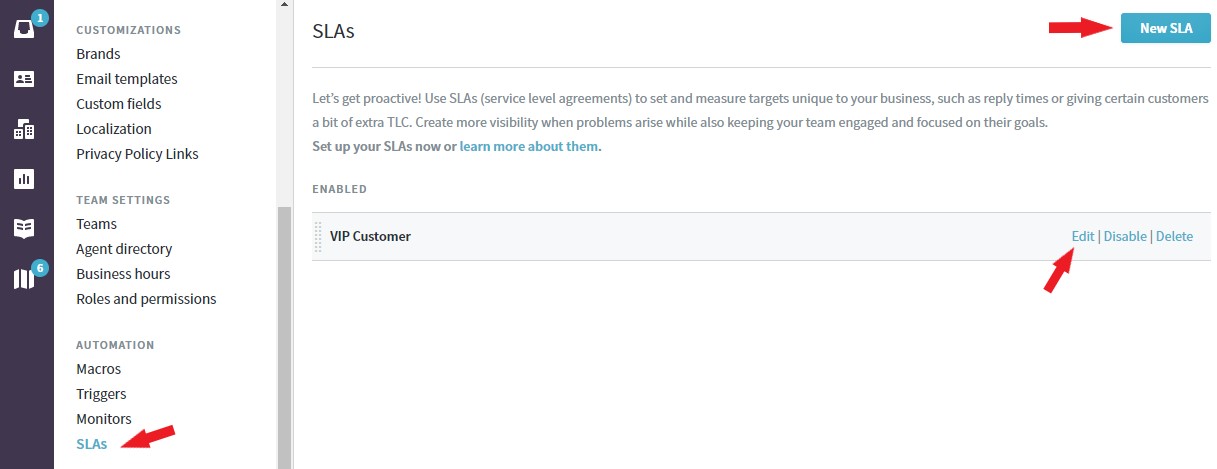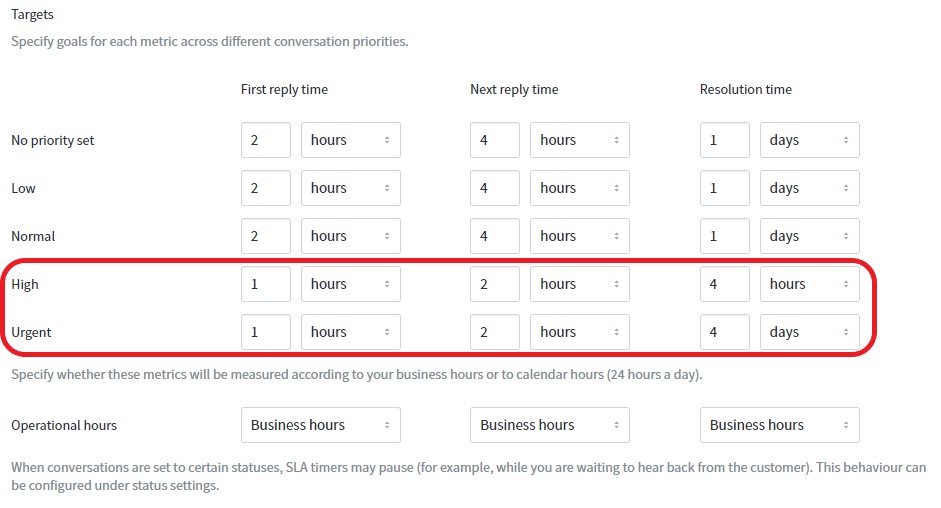Overview
Much of your team's success hinges on their ability to get back to your customers quickly. Managing your response and resolution times with an SLA is the best way to ensure that your customers aren't kept waiting.
The Inbox price plan does not support SLA while Growth supports one (1) SLA. If you want more SLAs, you need to upgrade to Scale or higher price plans. We do not sell additional SLAs only as they are part of our price plan packages.
Diagnosis
Each SLA establishes and monitors target times for when your team should be responding to and resolving their conversations. Based on an SLA, you can also build automations to escalate any conversations that have breached their targets.
Understanding How Kayako Manages SLAs
Out of the box, Kayako comes with a single default SLA that you can modify to suit your team's benchmarks. You can set targets for each of the following:
- First reply time — The time between when a customer starts a conversation and when your support staff sends their first reply.
- Next reply time — The time between when the customer updates the conversation, and your support staff sends their response. This will reset every time your staff updates the conversation.
- Resolution time — The time between when the conversation was created and when it's set to 'Completed'.
For any conversation that is subject to an SLA, you'll see where it's at its targets in the top toolbar.

You can also customize the timing for different priority levels so your team can keep their focus on your most urgent conversations. If you've set up your team's working hours, you can also tell Kayako only to count your business hours against your SLA targets.
If you are subscribed to the Scale or Enterprise plans, you can also add additional SLAs, customized to apply only to conversations that match the conditions you define. For example, if you have a particularly high-profile client, you can set an SLA with, especially tight timeframes to ensure that their conversations get VIP service. On the Scale and Enterprise plans, you can also create multiple sets of business hours, if you have different teams working at different times.
NOTE: If your team needs multiple SLAs or sets of business hours, you can upgrade your plan, or visit our pricing page to learn more about pricing packages.
Once you have your SLAs dialed in, you can build automation to bring any overdue conversations to the immediate attention of your team or tag and increase a conversation priority that breached the SLA. When you're all set, you may also define some SLA-related views.
If you need help with the basics of building automations, check out our instructions on how to create triggers and monitors and our automation reference guide for conditions and actions.
Now that you have a sense of the moving pieces let's have a look at the steps involved in defining your own SLAs.
Defining SLA Targets
For each SLA, you can set targets for three different metrics over the lifecycle of a conversation. Different targets can be set for different conversation priorities. You'll also choose whether Kayako will count every hour towards the targets or only the hours that your team is on the clock.
In the example below, we're going to create an SLA for VIP customers.
Prerequisite
- To add or modify SLAs in Kayako, you will need an administrator account with the 'Manage SLAs and business hours' permission.
Solution
To establish SLA targets:
-
Sign in to Kayako and go to the admin area.
-
Choose SLAs from the left sidebar.
-
Depending on your plan (Scale and Enterprise plans can have multiple SLAs), you can also create a brand new SLA by clicking the New SLA button in the upper-right. If you are not on a Scale or Enterprise plan, then you would go to edit the default SLA configured.
NOTE: To edit the default SLA, hover over the SLA, and click the Edit link that appears.

-
In the SLA Title field, add a descriptive title. In this exercise, let's say VIP Customer.
NOTE: It's essential to use a good naming convention so you can keep track as you add more and more automations. -
In the description field, type a short description for this SLA.

-
In the 'Apply this SLA to conversations which match the following' section, select 'Conversations: Tags'.
- From the next drop-down menu, select contains any one of the following.
- From the next blank field, type the [tags] you want to use for this customer (e.g.,
vip,vip_customer,vip-customer, etc.).
-
Under the 'Targets' heading, have a look at the table:

- NOTE: This table shows the threshold set for each priority for 'First time reply', 'Next time reply', and 'Resolution time' targets.
-
Adjust the thresholds depending on your need. For example, you may want High and Urgent conversations to be taken care of within 1 hour, next time reply in 2 hours, and bump resolution time to 4 hours, then adjust these values accordingly.

-
Make any other adjustments you'd like, for other priority levels, and then drop down to the 'Operations hours' section.
-
Here, let's set all dropdowns to 'Business hours' so that only the hours that your team is on the clock count against your targets (first reply, next reply, and resolution times).
-
Once you're good with the settings, click the Save button to update the SLA.
Testing
This SLA will be applied to conversations that contain any of the following tags: vip, vip_customer, vip-customer. Therefore, if you have specific customers that you consider as "VIPs," then your agents need to add any of these tags to conversations from these customers.
To learn more about tags, please visit the Adding Tags in Kayako article.
Additionally, you can use a trigger to build an automation that will auto-add tags to certain organizations. These organizations will be the ones whom you consider as "VIPs". This saves you from having your agents do the manual work of adding the tags to each customer every time a new conversation comes in.
ATLAS
Comments